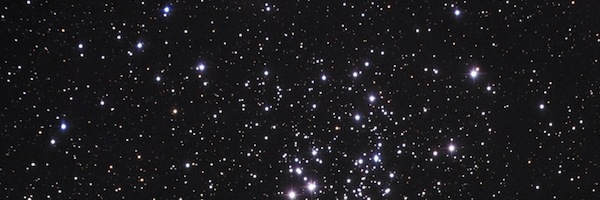NASA’s Kepler space telescope has spent three years searching for exoplanets – planets outside our solar system – that could potentially support life. Analysis of the data collected now suggests that there are billions of Earth-sized planets orbiting at a safe distance from Sun-like stars in our galaxy.
Kepler identified planets by looking for a periodic dimming of distant stars caused by passing planetary bodies, and then other, ground-based telescopes estimated the size of the planets. From there, scientists extrapolated an estimate of the real number of potentially habitable planets in our galaxy. Of course, it is just an estimate, and there are a lot of other factors to consider before we start sending ambassadors to the stars. First, all we know is that these planets are the same size as Earth and/or orbiting at a “Goldilocks” distance (not too close to the star, but not too far away either), but that doesn’t necessarily mean they are similar to Earth in other ways. Second, we have no way of knowing which planets, if any, could have evolved life we would consider to be intelligent, and, third, these planets are still really, really far away. Researchers estimate the closest of these planets could be 12 lightyears from us, which would mean it would take us twelve years to get there if we could travel at the speed of light. Very close in space terms, not so close in practical terms.
Still, many scientists are optimistic about the preliminary conclusions from this data. Geoff Marcy, one of the authors of the study, called it “one great leap toward the possibility of life, including intelligent life, in the universe.” Jill Tarter of SETI (the Search for Extraterrestrial Intelligence), also expressed optimism about the results:
“We haven’t yet found Earth 2.0, but these statistics suggest that it should be forthcoming, and soon. When we can point to Earth 2.0 in the sky, it will seem completely natural to ask ‘Does anybody live there?’ and ‘Can we go there?’ I think Earth 2.0 will concretize SETI as nothing else has.”
The authors of the study estimate that there are 25 billion Earth-sized planets orbiting in “habitable zones” in our galaxy. Of course, there are still more data to go through and more corrections to be made, but the outlook is good. We might be one step closer to finding all those Sebaceans, Time Lords, Klingons, and Castithans we’ve always dreamed of. Or maybe just some microbes, but, really, what’s the difference? It’s alien liiiiiiiiife.
(via: Washington Post)
Are you following The Mary Sue on Twitter, Facebook, Tumblr, Pinterest, & Google +?








